Seis Edge-to-Edge Digital Quilting Design on my Plaid-ish 2 Quilt
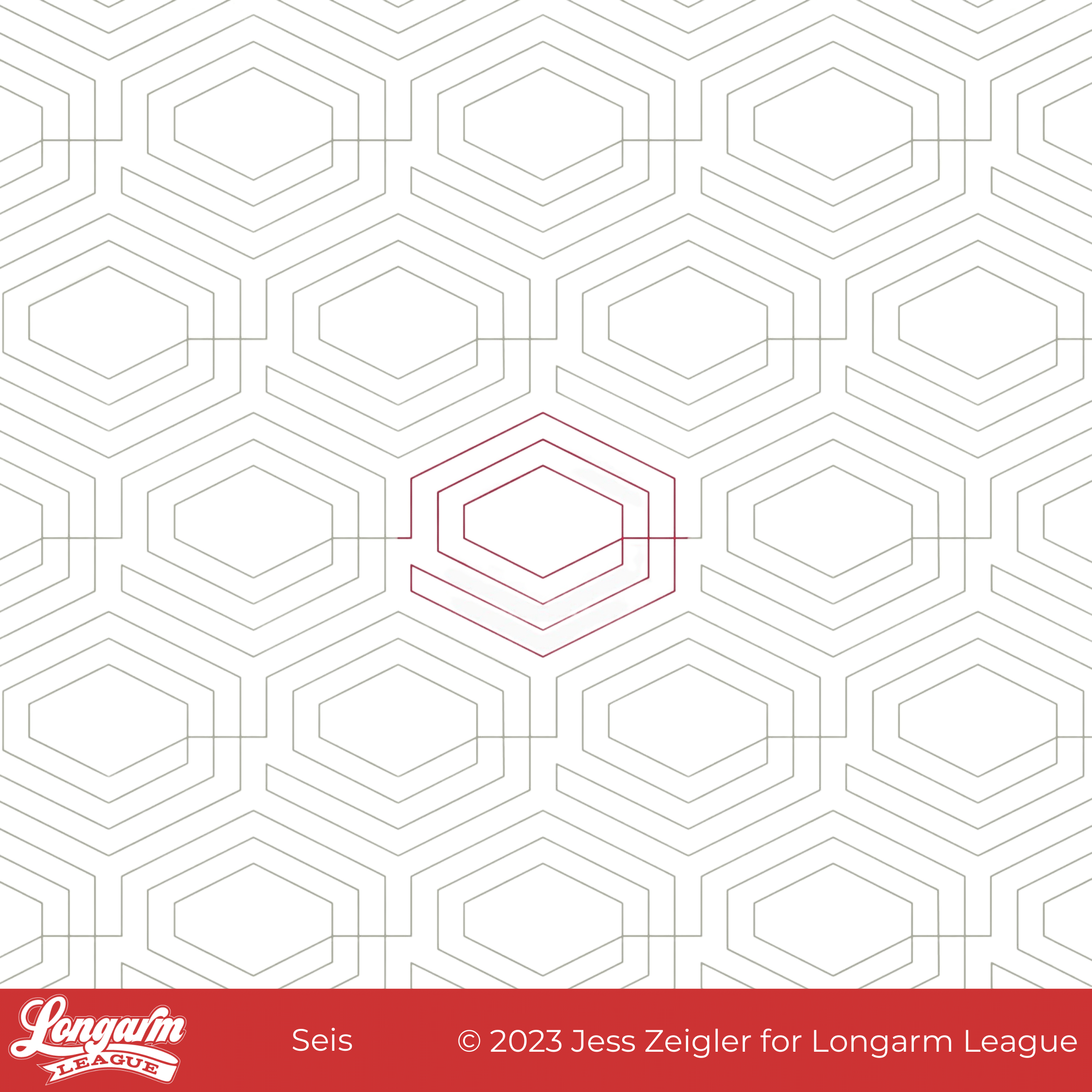
Seis is the word for the number six in Spanish. Based on this design's hexagon shape, I knew I wanted to name it something relating to the hexagon, but I haven't gotten far enough in Duolingo to know the name for hexagon en español yet, so Seis is where I landed.
Okay, Google tells me hexagon is hexágono in Spanish, but now it's too late! I've already committed to Seis.
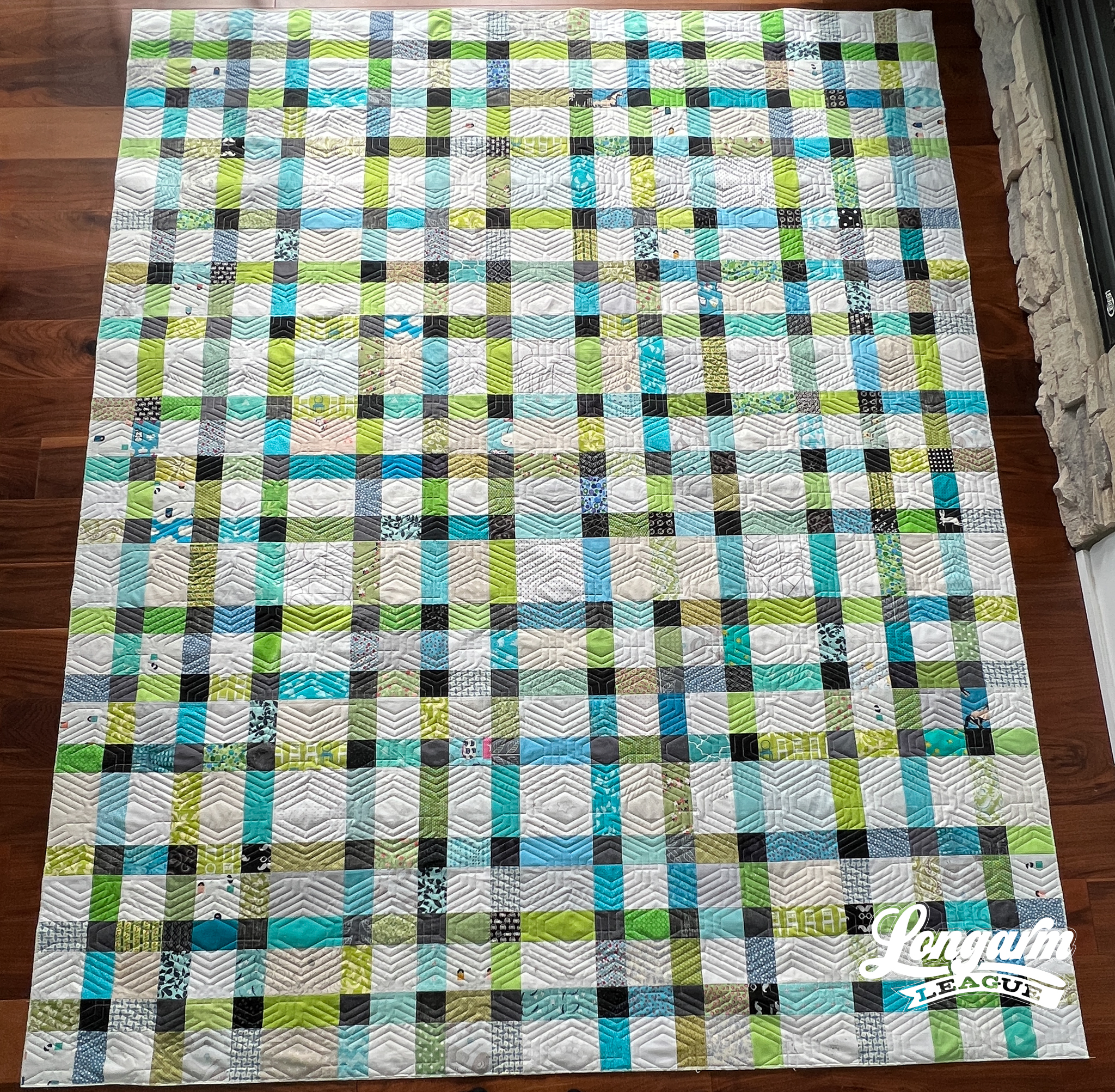
If you're on our email newsletter list, you might remember me talking about how obsessed I am with Duolingo. I am learning Spanish these days (streak of 57 days, nbd) to augment my high school Spanish education which started some 28 years ago. Ouch! It's one thing to recall the years since high school graduation, but it's another experience to count back to the time you began high school. I wasn't ready for that number!
Anyway, if you are interested in learning another language (they offer courses for 40+ languages), check out their website or download the app. They have a free tier, but I've found the paid family plan to be well worth the money—two of my kids are learning Spanish, too. I love how Duolingo is gamified to maximize fun and learning. It's the best! 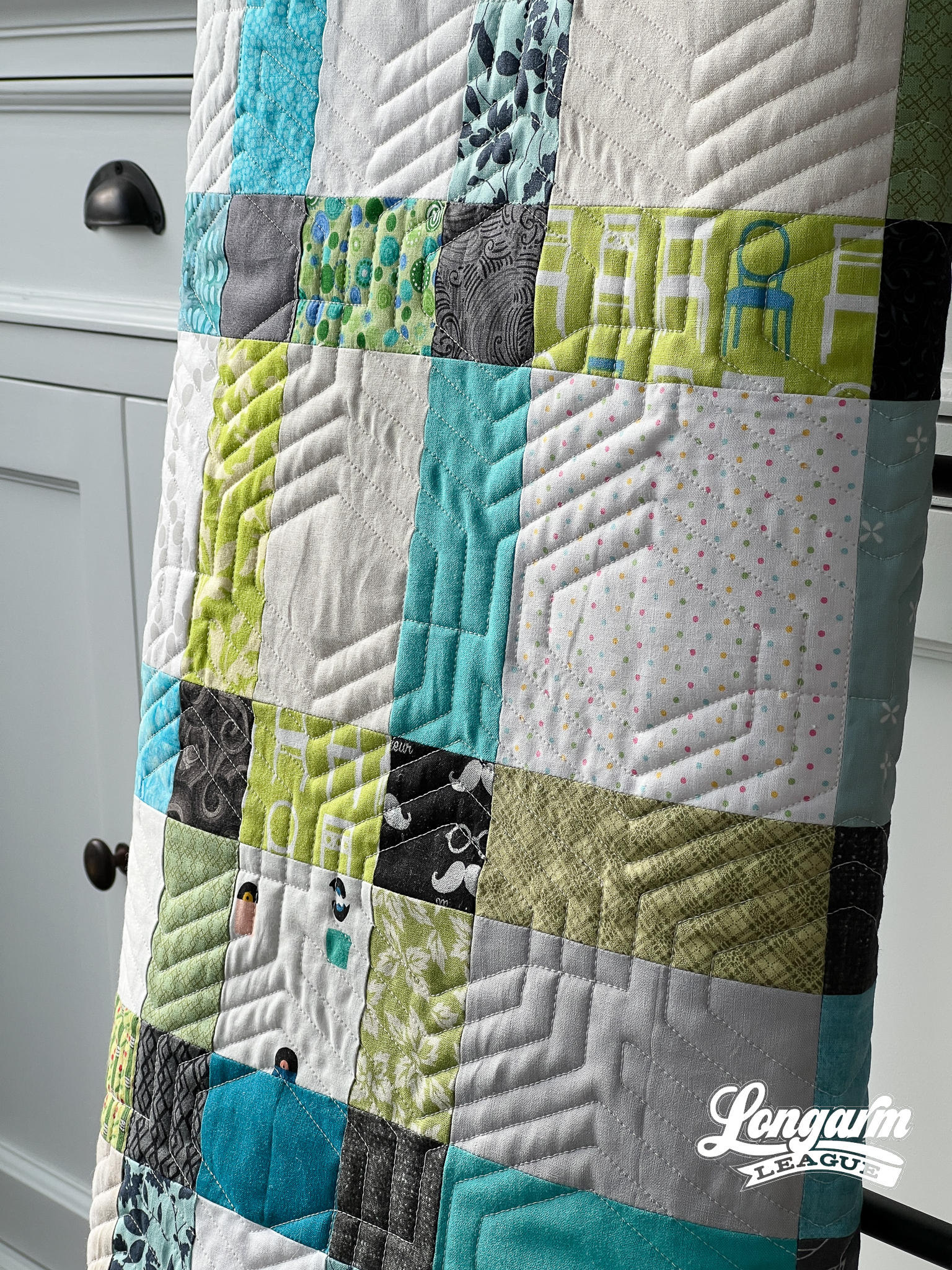
I really didn't intend for this to be a Duolingo commercial. Let's get back to quilting!
I really like playing up the contrast when it comes to choosing a quilting design. Seis is a great choice because its shape is going to contrast with most patchwork out there... except maybe for hexagon quilts. 😏

Echoed quilting lines always create impact and fantastic texture. I like how this design amplifies the angled lines where the rows meet.
The areas of non-quilting in the centers of the hexagons provide even more contrast in comparison to the dense echoed lines, creating an interesting "topography" for a quilt.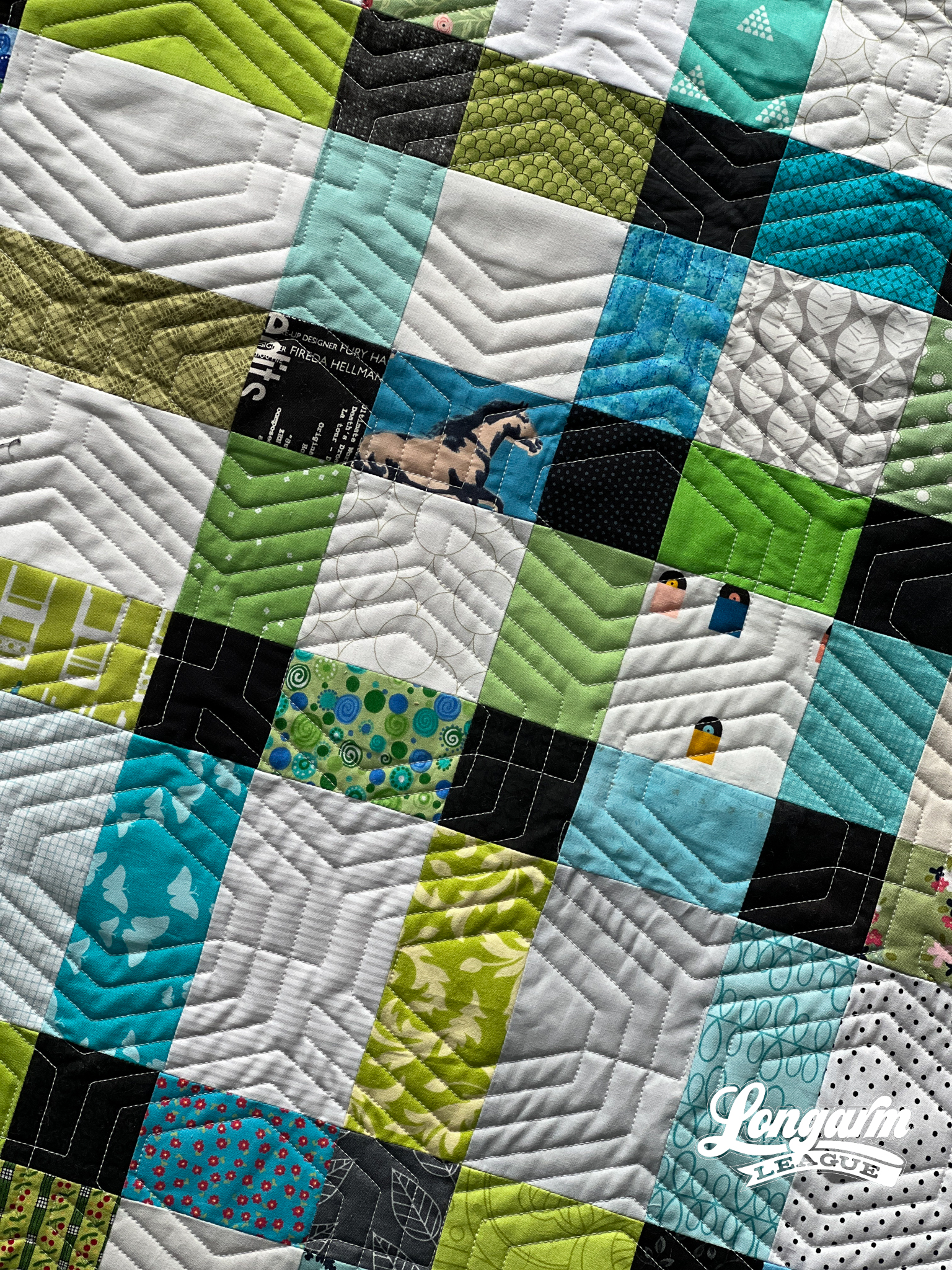
There is no backtracking in the stitch path, which is very satisfying to me. 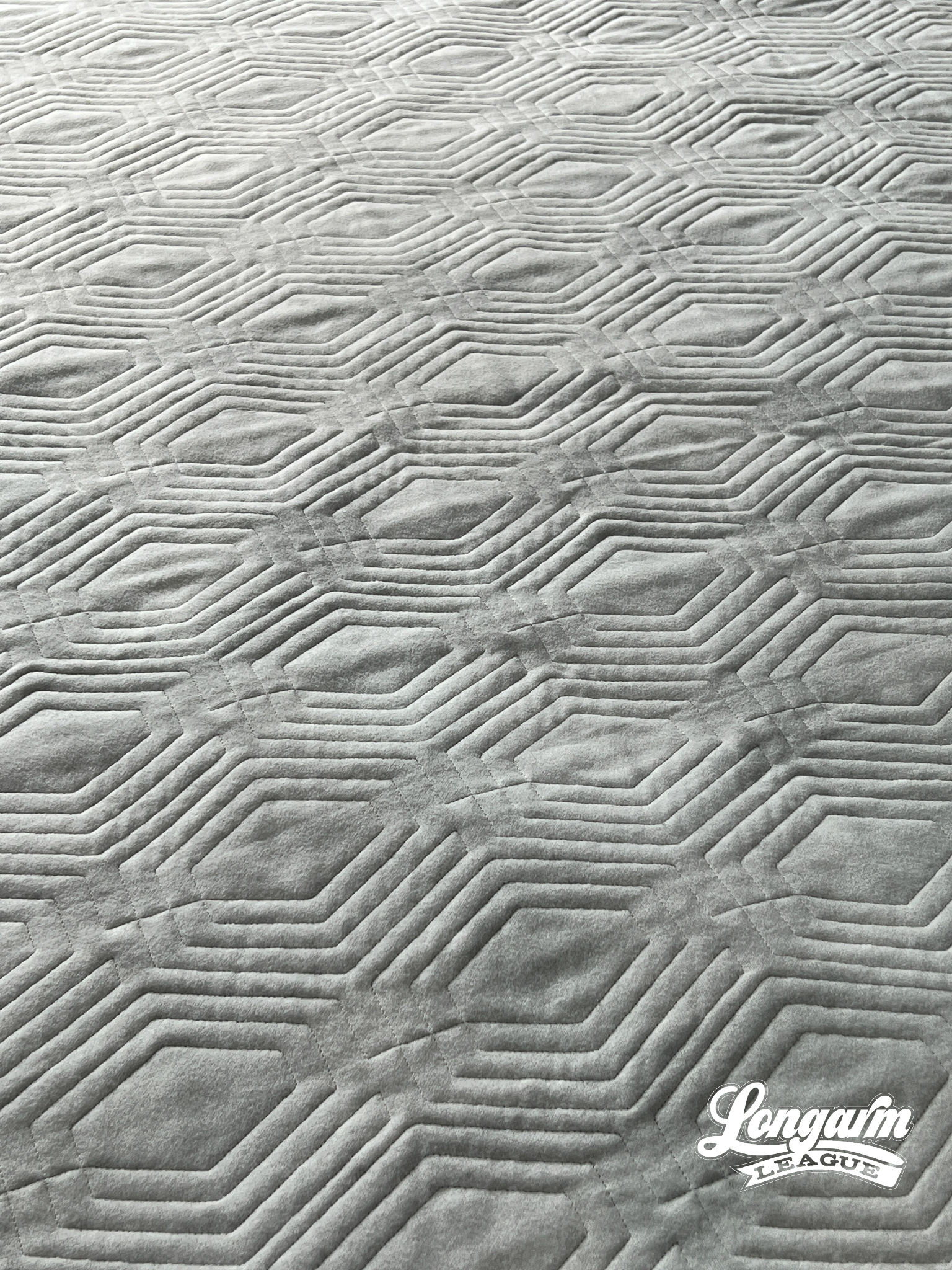
The Quilt
The quilt pictured throughout this blog post was a BLAST to make! It's the Plaid-ish 2 quilt from Kitchen Table Quilting (the link will take you to the free pattern download).
I dug deep in my scrap bins for this - it's a big quilt. The pattern uses scraps divided into light, medium and dark values. For my mediums, I cut the blue and green scraps in equal amounts and didn't worry about the placement too much. It turned out so fabulously that I'd love to make another one someday in another color way.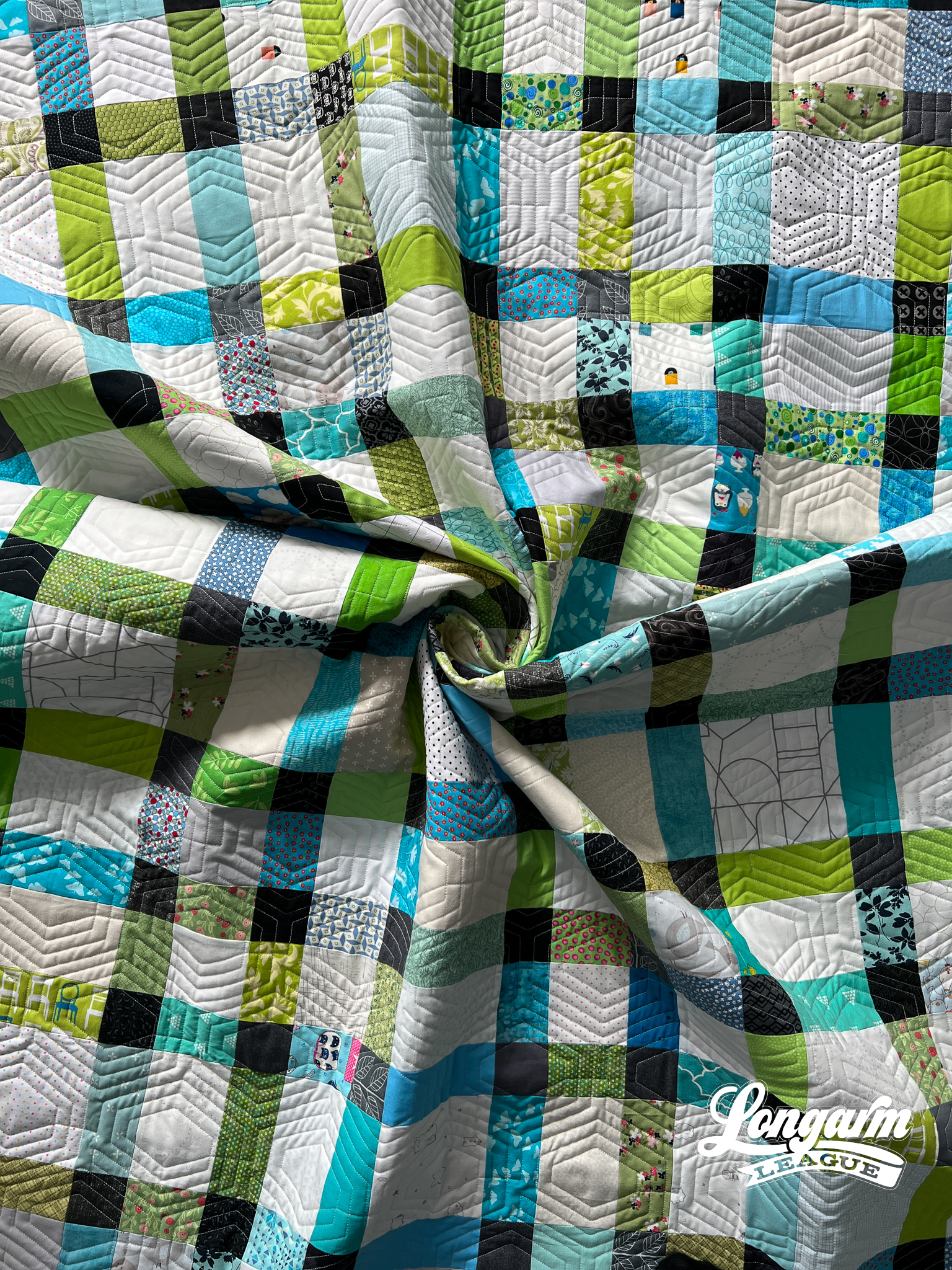
Scrap quilts take so much longer to make. This is probably true for most people, but also my scraps aren't organized very well.
Are scrap quilts worth the extra time and effort?! Absolutely! I love revisiting the projects of yore through the leftover fabric. I really love it when all those fabrics spanning different decades (in some cases) come together in a beautifully cohesive way.
At the last retreat I attended, I hauled MANY bins of fabric scraps with me so that I could work on a scrappy quilt while I was there. This was a mistake.
Next time, if I can get organized ahead of time, I'd much rather cut lots of scraps out for a specific project at home and then use the retreat time to sew, sew, sew!
There you have it, my best life... or best intentions for my best life. The next retreat I get to attend is already on my mind, can you tell?
The Quilting Details
A video of the stitch path appears at the top of this post. I stitched each row from left to right and didn't have any issues with the alignment or placement of the rows. When nested properly, it should look like a consistent amount of spacing within the echoed lines surrounding the hexagon and between the rows.
Do you ever have issues with alignment between rows being off? Check out this blog post, it'll give you some new tricks that you can try. It can be a very common problem.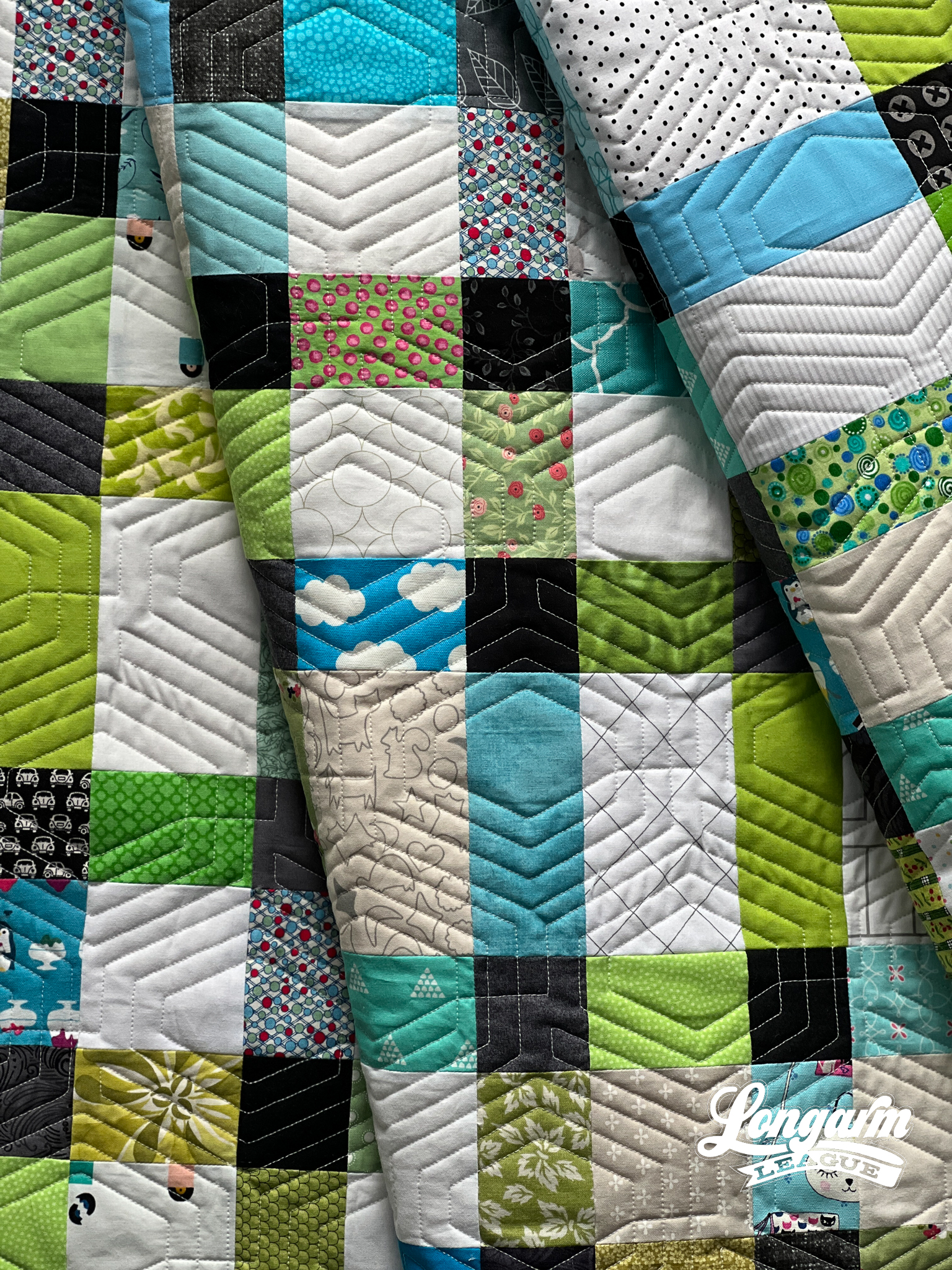
Here are the sizing specifications for how I set up this design using my Intelliquilter (69" x 86" quilt size):
Row height: 4"
Gap: -1"
Pattern height: 5" (measurement from top to bottom of the repeat)
Offset: 50%
Backtracking: none
Since the hexagon centers are rather large areas with no stitching within, I'd hesitate to scale the design up too much. At the given dimensions, the echoed lines are approximately a half inch apart, making the un-quilted centers about 3" wide x 2" tall.
Here's a look at the included PDF:
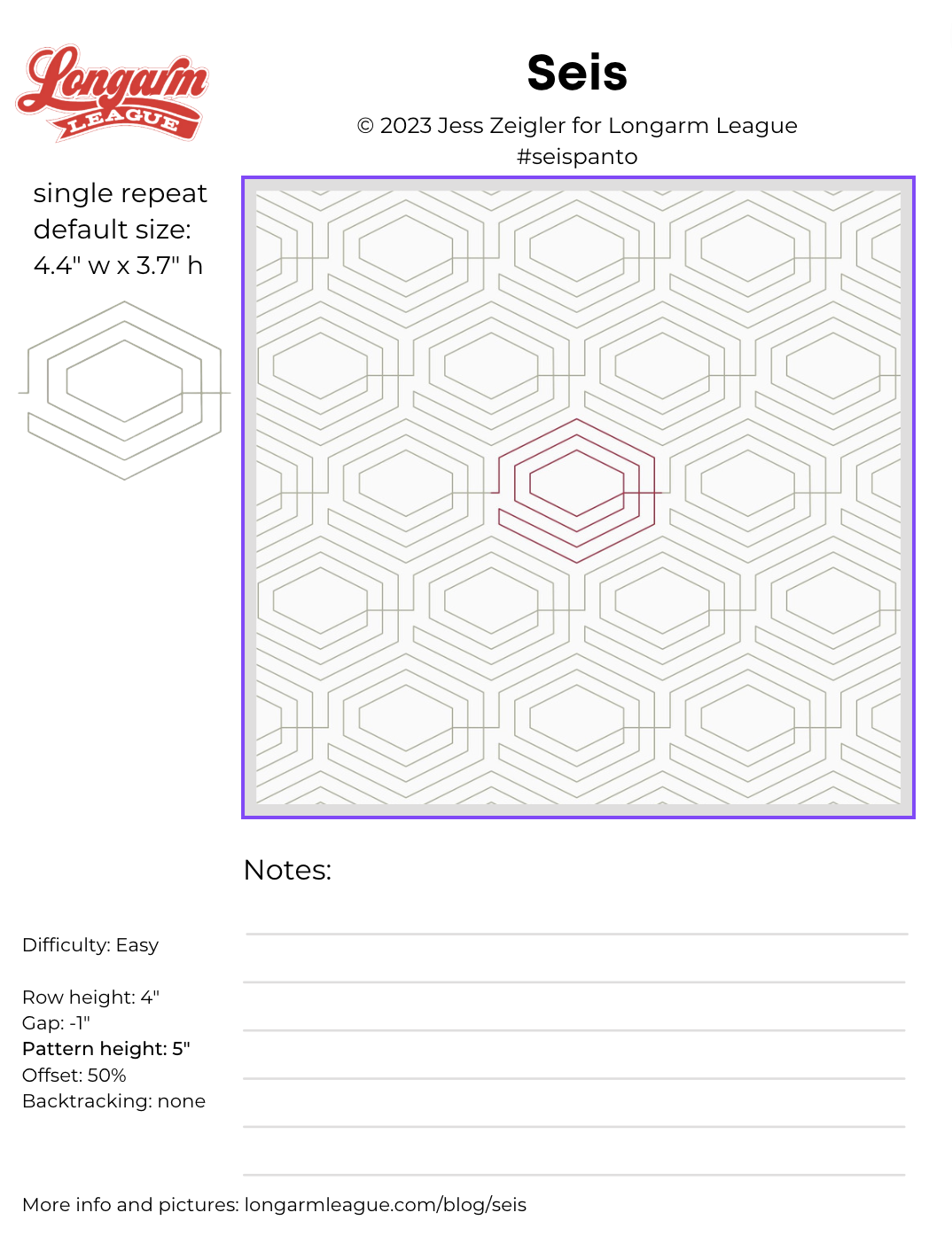
I used an Oasis Fabric cream flannel wide back from Mashe Modern for the backing which added a soft feel. I don't think I've ever used a flannel back for any of my own quilts before but it was great to work with.
I'm including this photo below to show you what the quilting would look like if you loaded a quilt on its side and stitched out the design. The resulting orientation would appear vertically when the quilting was finished. I really like the look of the design this way, too!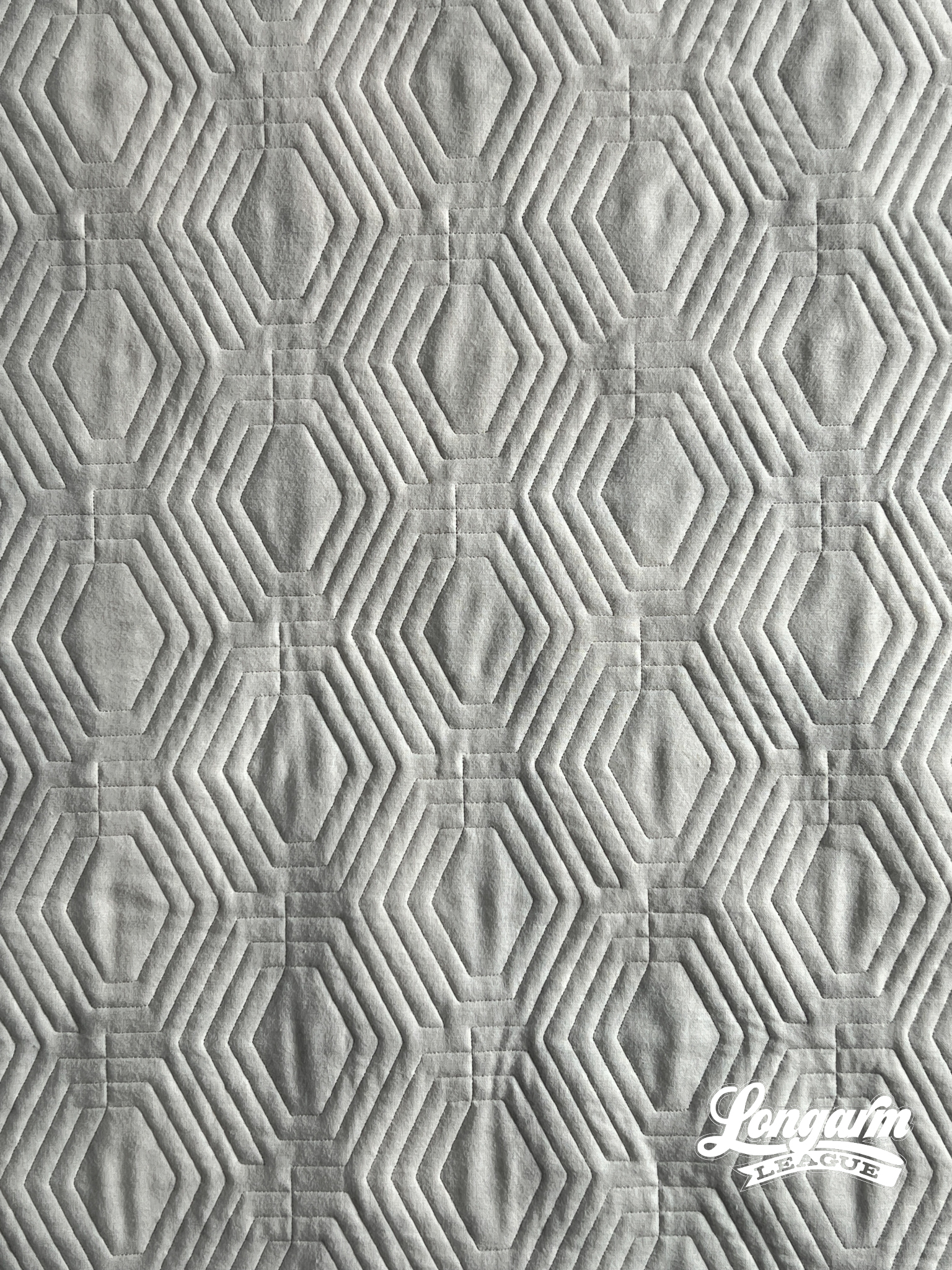
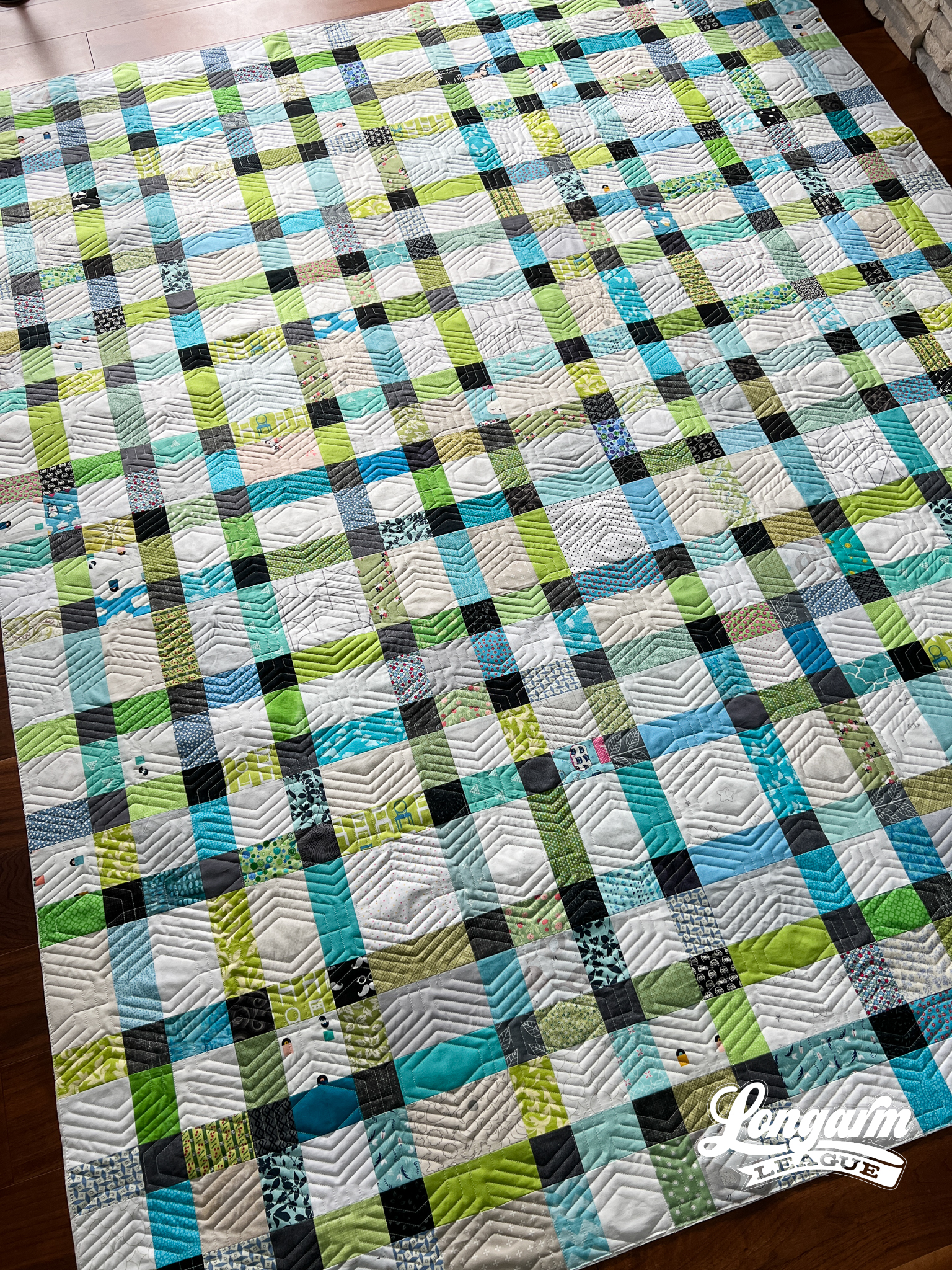 If you use Seis on a quilt, we'd love for you to use the hashtag #seispanto and tag @longarmleague on Instagram so we can see how you use it! You can also visit our full digital design shop to take a look at all our previous designs.
If you use Seis on a quilt, we'd love for you to use the hashtag #seispanto and tag @longarmleague on Instagram so we can see how you use it! You can also visit our full digital design shop to take a look at all our previous designs.
Interested in getting new digital pantograph designs like this one on the day they're released (and at a deep discount)? Sign up for our Digital Panto Club and get them delivered straight to your inbox on the first Wednesday of each new month.








